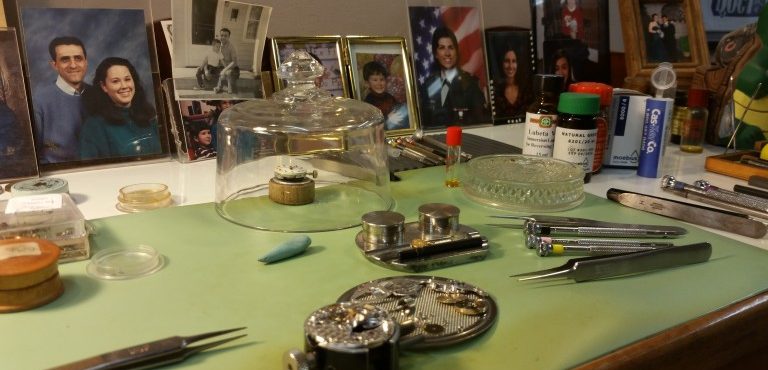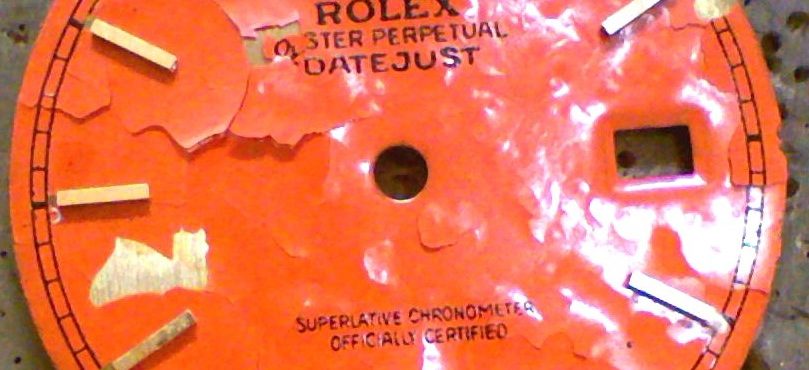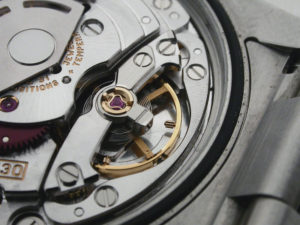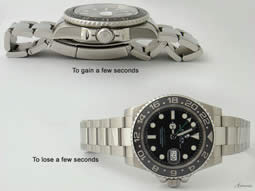Today’s blog post will continue with the overhaul of a Rolex 3135 movement. We will go over the reassembly process, oiling and buffing. After the movement comes out of the cleaning machine, the parts are unpacked from the cleaning basket and the process starts. I normally make a quick check to see if all the parts that went into the machine, are also there when it came out. .. Read More
Overhauling a Rolex Model #3135 (Part 1)
The last few blog posts were about the “Tools of the watchmaker’s trade” and seemed to be well-received by my readers. I had a few people wonder how a watch is overhauled, step by step. I thought this was a great idea, so today is Part 1 of “How to Overhaul a Rolex model #3135.” The first task in the overhaul process is to remove the movement from the case… Read More
Tools of the trade, Part III: My machines
In this third part of my blog on the “Tools of the watchmaking trade,” I will show you some of the machines that I use every day in the watch shop. Let’s get started with the heart and soul of my shop, my cleaning machine. Cleaning Machine I have been using the RM-90 German-made cleaning machine for the past 10 years. It is the true workhorse of my business. It.. Read More
Tools of the trade, Part II: Equipment and tools to fix a watch
This week’s blog post will continue showing you some of the tools and equipment that I use every day to repair your watch. I am glad to see everyone is interested in how your watch is repaired and what a normal day is like at the “watch shop”. My glasses and loupe My glasses and Loupe are the heart of my job. Without my loupe, I am out of business… Read More
Tools of the trade: A look at the tools of a watch doctor
I’ve always had a number of customers ask me several questions about watch repair. That expands to how I do my job, what tools I use and why I do the things I do. I thought it would be good to show some behind-the-scenes information on where you’re sending your watch for a repair. Bench My workbench is 42 inches tall, 40 inches wide and 17 inches deep. This is.. Read More
Watch myth part 3: Water resistance
As we start the month of April, it is the time of year when the weather is getting warmer and people are going outside again. Everyone is going on vacations, swimming in the pool or washing the car. At the watch shop, it is “wet watch season.” This week we are going to go over the “myth of water resistance.” This is a topic that I’ve covered many times, but.. Read More
How to: Replace an oscillating weight axle
Next up in our series of “How to” blogs, we look this week at how to replace an oscillating weight axle. An oscillating weight axle is the small pinion that supports the oscillating weight in an automatic watch. The weight rotates with the motion of your wrist and the axle supports the weight and is normally held in place with a jewel. If you drop or bump your watch very.. Read More
How to: Put a watch in beat
Over the next couple of weeks, we are going to bring customers and readers “behind the curtain.” We’re going to show you how things work, why they work and why we do the things we do while repairing watches. This week, we are going to look at how to put a watch in beat. With the power released, if the watch is in beat the pallet fork will be centered.. Read More
Watch myths, part 2: Watches and windmills
This week we are going to go over the myth of how the power reserve on an automatic watch works. Is the power reserve that I read about on the internet correct? The 38-40 plus hour power reserve that you read about in chat rooms or in other places on the internet is often misleading. The power reserve on an automatic watch is going to depend on the quality of.. Read More
Some Myths About Watches, Part I
This blog post may be controversial, but it is from my humble opinion from my experience as a watchmaker for the past 44 years and after repairing about 30,000 watches. If someone can give me a valid scientific explanation of why I am wrong, I would be glad to hear it. I was asked a question recently about the idea that if you lay your Rolex on a counter, stem.. Read More







